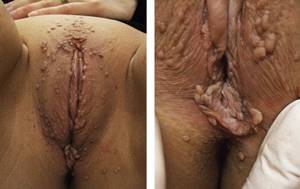Characteristics of pathologies
Diseases included in the list of hidden infections in women are ailments that are contracted during sexual intercourse.
Sometimes such pathologies can be transmitted through everyday contact or from mother to baby (vertical). Diseases are called hidden because such pathologies are difficult to diagnose. They have a small list of manifestations. Most often they are completely asymptomatic. As a rule, pronounced manifestations characterize the stage of the complication.
These infections are almost impossible to diagnose with routine tests, such as bacterial culture or smear. To identify them, special medical studies are needed. Below we will look at what and why you need to test for hidden infections.
The course of the disease can be aggravated by various factors:
- unfavorable environmental conditions;
- unhealthy diet;
- reduced immunity;
- stress.
Types of female tests for infections
When a doctor contacts him, based on the results of the woman’s examination, he will decide for which infections she should be examined and what tests need to be taken for this.
In addition to smears for flora, you may need to carry out bacterial culture, blood and urine tests.
Blood testing for antibodies to pathogens is a fairly sensitive diagnostic method, but can only be effective after the incubation period of the disease has ended.
If you donate blood for testing before symptoms of the disease appear, then the presence of antibodies in the test is unlikely.
If a latent infection is suspected, the use of ELISA will be effective.
The technique is important for the timely diagnosis of asymptomatic diseases in order to prevent the development of complications and infection of others.
For example, examination for human papillomavirus infection involves the following tests:
- ELISA, which allows you to detect the presence of antibodies to HPV in a woman’s blood.
- PCR research, as a result of which fragments of the genetic material of the pathogen should be identified.
- If the presence of bacterial pathogens is suspected, additional culture testing will be required. Bacterial culture will also make it possible to determine the sensitivity of pathogenic flora to the effects of antibacterial drugs, which will make it easier for the doctor to select medications.
List of hidden female infections
According to statistics, every third woman who is sexually active has one or another type of hidden infection, and in some cases several.
Therefore, this material will be devoted to information about what hidden infections there are in women, their symptoms and first manifestation.
The list of STDs includes 31 pathogens: ectoparasites, fungi, bacteria, viruses. The most famous diseases: HIV, syphilis, herpes, gonorrhea; less known: mycoplasmosis, ureaplasmosis, gardnerellosis, papilloma virus, chlamydia.
Hidden infections in women include:
- ureplasma;
- gardnerella;
- chlamydia;
- herpes viruses;
- human and urogenital mycoplasmas;
- cytomegalovirus (CMV).
Gardnerellosis (bacterial vaginosis) is a latent infection caused by the gardnerella bacterium. In this case, the vaginal microflora is disrupted.
Herpes is a virus that appears on the mucous membranes and skin in the form of blisters. Once the virus enters a woman’s body, it remains there forever. When immunity decreases, the virus manifests itself. This disease is the most common STD.
Candidiasis is an infection that most people know as thrush. It is caused by yeast-like Candida fungi. This fungus is constantly present in a woman’s body, but under favorable conditions it begins to spread and multiply, causing a disease - vaginal candidiasis. This disease is not dangerous to health, but can cause discomfort.
Which doctor treats female genital infections
Treatment of infectious lesions of the reproductive system in women is carried out not by one specialist, but by different ones. This approach to treatment is explained by the ability of pathogens to affect both the genitals and other organ systems.
Treatment of pathological processes caused by infection of the female reproductive system is usually carried out by the following specialists:
- dermatovenerologist
- gynecologist
- infectious disease specialist
- hepatologist
- gastroenterologist
- rheumatologist
A dermatovenerologist is a specialist who can conduct an examination and prescribe an appropriate course of treatment.
A woman can contact this specialist in the following cases:
- if you had sex with an infectious sexual partner;
- in the presence of contact without the use of protective equipment with a man about whose health there are doubts;
- when rashes or ulcers appear on the genital mucosa or the skin of various parts of the body;
- the occurrence of skin neoplasms;
- if condylomas appear on the mucous membranes.
In addition to the examination, you can discuss the optimal methods of contraception with a dermatovenerologist. Also ask for help in choosing preventive treatment (drug prevention) for venous diseases.
But, as a rule, any woman initially tries to visit a gynecological office.
The reasons that prompt a woman to visit a doctor are most often:
- the appearance of pathological leucorrhoea
- pain in the genital area
- presence of unpleasant odor from the genital tract
- discomfort during sexual intercourse
- abnormal pregnancy
- inability to conceive (infertility)
The gynecologist also resolves issues related to complications of the infectious process and pathology of the woman’s reproductive function.
An infectious disease specialist treats people with HIV, hepatitis B and C, herpes and cytomegalovirus infections.
Gastroenterologists and hepatologists are specialists who treat diseases of the gastrointestinal tract, including the liver.
Their main role is the treatment and monitoring of patients affected by viral hepatitis B and C.
A rheumatologist is a doctor whose patients are patients with autoimmune pathologies.
Also with diseases that contribute to the destruction of connective tissue. For example, chlamydial infection can cause Reiter's syndrome. This is a disease that manifests itself as damage to the joints, conjunctiva of the eyes and genital mucosa.
List of hidden infections in women
These diseases are transmitted sexually. The carriers have no complaints.
The spread of hidden infections in women goes through the following stages:
- Infections affect the vagina and cervix. This process can cause cervical erosion. Reproduction occurs in the erosion zone, since it has favorable microflora for viruses and bacteria.
- The second stage is damage to the uterus and appendages; the infection can also penetrate the urinary tract.
- At this stage, the infection in women goes further, affecting the appendages, urinary tract, spreading throughout the body, complaints of irritation of the mucous membranes begin to appear: stomach ulcers, conjunctivitis, stomatitis. An inflammatory process begins in the appendages and uterus, and adhesions can form.
Signs and manifestations of latent infections in women, in other words, symptoms, are the following:
- fleeting rashes on the genitals;
- vaginal discharge with an unpleasant odor;
- burning sensation in the vagina;
- presence of itching in the vaginal area;
- the presence of a burning sensation during urination.
Chlamydia and mycoplasmosis can occur for a long time without symptoms. Recently, the number of hidden sexually transmitted infections includes syphilis, trichomoniasis and gonorrhea. Diseases such as trichomoniasis, gonorrhea, syphilis, similarly, may not manifest themselves at first and have no symptoms. That is why they are called hidden.
The list of STDs contains 31 pathogens:
- viruses,
- mushrooms,
- bacteria,
- ectoparasites.
The most well-known pathologies are herpes, syphilis, and gonorrhea. Lesser-known diseases include: ureaplasmosis, mycoplasmosis, human papillomavirus, gardnerellosis, chlamydia.
So, the main list of hidden infections:
- gardnerella;
- ureaplasma;
- herpes viruses;
- chlamydia;
- cytomegalovirus (CMV);
- candida fungi;
- human, urogenital mycoplasmas.
STD treatment
After laboratory confirmation that the patient has an STD, it is necessary to undergo comprehensive treatment together with her sexual partner, even if he does not have any signs of the disease or tests do not show an infection. In men, due to the characteristics of the urethra, it is very difficult to diagnose STDs, so they require special preparation before being tested for infections.
Different infections are treated differently, but the principle is basically the same: destruction of the pathogen, restoration of microflora and support of the immune system. Chlamydia, ureaplasmosis and mycoplasmosis are treated with antibiotics (Vilprafen, Unidox, Levofloxacin, etc.) and vaginal suppositories (Hexicon, Macmiror, Polygynax, etc.).

For trichomoniasis, antimicrobial and antiprotozoal drugs (Trichopol, Dazolik) and suppositories such as Hexicon, Klion-D, etc. are prescribed. HPV and genital herpes require the use of immunomodulators in the form of injections or tablets (Immunomax, Polyoxidonium, etc.), the use of special sprays for intimate hygiene (Epigen Intim, Panavir, etc.) or suppositories (Genferon, Viferon, Galavit).
Gardnerella is treated using metronidazole, antibiotics (Doxycycline, Azirthromycin, etc.) and suppositories (Neo-Penotran, Terzhinan, etc.). Gonorrhea is treated with broad-spectrum antibiotics (Ceftriaxone, Tsiprolet, Summed, etc.).

After antibiotics, it is imperative to restore the intestinal microflora. Beneficial bacteria such as Bifiform, Hilak Forte, and Normoflorins are excellent for these purposes. The vaginal flora is well restored by Vagilak, Acilact or Laktozhinal suppositories. You can increase local immunity by using Epigen spray, Galavit, Genferon suppositories.
During treatment, sexual activity must be excluded. It is better to be treated at the same time as your partner to avoid the possibility of re-infection. In addition to sexual transmission of infection, it is rare, but still possible, to become infected with STIs through household contact, so some experts recommend testing all family members for infections and, if necessary, treating everyone together.
Self-medication for STDs is unacceptable. An untreated infection threatens infectious and inflammatory diseases of the pelvic organs, infertility, infection of the fetus during pregnancy and a host of other unpleasant events.
General symptoms
Sexually transmitted diseases in women are manifested by primary symptoms, which include:
- burning and itching feeling in the genital area;
- rash that appears on the genitals;
- intimate discharge that has an unpleasant odor, uncharacteristic color, quantity and consistency;
- pain or a strong feeling of discomfort during intimate intercourse, which may also appear after sexual intercourse;
- pain and discomfort during urination, the frequency of urge increases significantly.
If at least one of the signs described above appears, it is necessary to consult a doctor as soon as possible and undergo a comprehensive examination in order to accurately determine the presence of infection in the body.
More complex, delayed symptoms may also appear, including the following:
- disturbances and disruptions of the menstrual cycle occur;
- in the pelvis, a woman is bothered by unpleasant painful sensations;
- miscarriage, infertility.
We invite you to familiarize yourself with Infectious diseases have a latent incubation period.
Any of the latent infections has certain signs and characteristics of the course, and they can have serious consequences for the whole organism. Not only the genitourinary system, but also other organs and systems may be affected.
Herpes virus
The development of the disease can be provoked by various types of virus, which is found in the body of every, even completely healthy, person.
It is simply impossible to cure herpes once and for all, since there is a tendency to relapse if there is a sharp decrease in the immune system.
It can manifest itself in the form of characteristic rashes on the skin, including on the mucous membranes, painful blisters and redness appear.
A strong feeling of discomfort, butt and pain in the perineal area begins to bother me, and every day the unpleasant symptoms only intensify. There is a sharp deterioration in health, copious discharge occurs from the vagina, and body temperature rises. If timely treatment is not started, a blistering rash begins to appear on the genitals, which also affects neighboring areas.
Complications that may occur include:
- keratitis;
- meningitis;
- conjunctivitis;
- encephalitis;
- the central nervous system is affected.
HPV or papillomavirus is a family of viruses that provoke the appearance of formations (condylomas, warts) on the mucous membranes and skin.
A characteristic feature of this disease is a latent and prolonged course, which is not accompanied by pronounced symptoms. Under conditions of a sharp decrease in immunity, an exacerbation of the disease is observed. As a rule, it is diagnosed during a medical examination during pregnancy and to detect cancer.
If warts begin to appear on the body, genital warts directly on the genitals or in the groin area, on the lips and oral cavity, diagnosis of cervical erosion - these phenomena give reason to assume the development of HPV.
In the absence of proper treatment, the following consequences may occur:
- breast cancer;
- cervical cancer;
- other types of malignant neoplasms.
Gardnerellosis
Vaginal dysbiosis or bacterial vaginosis, which was caused by the bacterium Gardnerella vaginalis, which is present in small quantities in the normal microflora of the vagina. However, during a decrease in immunity or the manifestation of some other disorder that causes the death of lactobacilli (milk bacteria), its rapid proliferation begins.
Signs of this disease include:
- itching, burning and pain, aggravated by sexual intercourse;
- the appearance of copious whitish or gray discharge that has an unpleasant aroma, possibly with a foamy consistency. Over time, they can become sticky, thick, and yellow-green in color.
There is a possibility of the following complications:
- inflammation of the vagina;
- onset of premature labor;
- urethritis;
- inflammation of the uterus, cervix, appendages;
- miscarriage.
Candidiasis
Thrush is caused by yeast-like fungi that belong to the genus Candida. This type of fungus is found in the vaginal microflora in small quantities. If the fungus begins to multiply uncontrollably, vaginal candidiasis develops.
Manifests itself with the following symptoms:
- cheesy white discharge;
- unpleasant painful sensations occur during urination and sexual intercourse;
- concerned about the feeling of burning and itching of the genitals, which may intensify.
Doctors believe that candidiasis has no delayed threat to a woman’s health, but requires timely treatment.
There are no obvious signs, but clear discharge may come out of the vagina, and painful sensations occur during urination or sexual intercourse.
Mycoplasmosis can cause the following diseases:
- appendages;
- urethra;
- vagina;
- cervix and uterine cavity;
- the development of the placenta is disrupted;
- infertility;
- polyhydramnios;
- miscarriage.
Ureaplasmosis
It is caused by the bacterium Ureaplasma Urealiticum. There are no specific signs, the only exception being clear vaginal discharge; a burning sensation during sexual intercourse and urination may be disturbing.
- narrowing of the urethra (stricture);
- inflammation of the fallopian tubes;
- fetal pathologies;
- adhesions form.
Chlamydia
This is one of the most well-known hidden infections, which is provoked by the intracellular microorganism Chlamydia. As a rule, the course is asymptomatic, sometimes minor itching bothers you, you may feel pain during urination, and the urge to go to the toilet becomes more frequent.
If the disease is not diagnosed in time and in the absence of proper treatment, symptoms such as fever, a feeling of general malaise, pain in the lower abdomen, and menstrual irregularities may appear.
The consequences of latent chlamydia can be:
- rectum;
- cervix;
- peritoneum;
- ovaries;
- fallopian tubes.
Cytomegalovirus
Cytomegaly is a disease caused by a type of human herpes virus type 5 (Cytomegalovirus). If a person has a strong immune system, the disease will proceed latently, and the virus can remain suppressed for several years.
Symptoms during an exacerbation of the disease are similar to those of acute respiratory viral infections and acute respiratory infections - high fever, weakness, headache, which makes diagnosis much more difficult. It is very difficult in old age with weak immunity.
We invite you to familiarize yourself with Ureaplasma in women, the smell of discharge
The following complications may occur:
- pneumonia;
- premature birth;
- gastroenteritis;
- intrauterine fetal death;
- hepatitis;
- miscarriage;
- arthritis;
- inflammation of the spleen;
- encephalitis.
This is where the list of the most common hidden infections in women ends; now we will tell you how to identify the problem and tests will help us with this.
Herpes virus
Most pathologies do not manifest themselves at all in the early stages. Therefore, patients seek medical help only during progression or exacerbation of the disease.
It is very important to suspect the development of the disease in a timely manner. To do this, you must know what hidden infections there are in women and their symptoms.
The primary signs of the development of pathology are:
- A feeling of itching and burning appears in the genital area.
- During or after an intimate relationship, there is a feeling of discomfort, sometimes even pain.
- There is a discharge that has an uncharacteristic color, specific consistency and unpleasant odor.
- A rash may appear on the genitals.
- The process of urination is accompanied by discomfort and pain. There is a frequent urge to go to the toilet.
If you have at least one of these symptoms, you must definitely consult a doctor and undergo the prescribed examination.
Delayed, more complex manifestations include the following symptoms:
- The menstrual cycle is disrupted.
- A woman cannot bear a child.
- Infertility.
- Uncomfortable and painful sensations appear in the pelvis.
It should be understood that each latent infection has a certain set of symptoms and characteristics of its course. In addition, they can lead to a wide variety of serious complications, affecting not only the genitourinary system, but also many other organs.
Hidden sexual diseases: list of infections, course, tests
Hidden infections are hidden in order to hide and disguise themselves.
They involve the penetration of a pathogen that is not particularly capable of secreting proteins that cause a response from the body, for example, the intracellular parasite chlamydia, or a pathogenic agent that a weak immune system cannot respond to on its own.
Thus, the development of a latent infectious process requires certain conditions: the presence of a source of infection, a mechanism of penetration, characteristics of the pathogen and the susceptibility of a given individual to infection.
Most often, the entry gates for microbes that form the primary foci of latent diseases in the body are the mucous membranes of the respiratory tract, digestive and urogenital tracts.
Microorganisms that inhabit the external environment in large quantities can be pathogenic, opportunistic or non-pathogenic (saprophytes that are part of the normal human microflora).
For the latter, infection does not play a special role, because the leading factor in the development of the disease is the weakness of the immune system.
An inadequate immune response in general or a decrease in the functioning of local defenses can cause the formation of an infectious process, which can occur in two ways:
- An obvious infectious disease with an incubation period, a clinical picture corresponding to the pathogen and a certain result (recovery, chronicity, recovery with consequences or progression of the process).
- Asymptomatic carriage. Opportunistic flora does not always give clear manifestations of the presence of the pathogen in the body, the incubation period may be absent, the period of time from infection to the appearance of signs of infection may be indefinitely long, the local inflammatory focus may go unnoticed and the person will be unaware of the presence of chronic latent infection. infections. Many problems in this regard are created by saprophytes, for example, fungi, which constantly live on the intestinal mucosa, but, once in another environment (urogenital tract), with weak immunity, begin to actively multiply. A healthy immune system usually does not allow this, that is, how long the infectious agent lingers in the new host’s body depends on the type of microorganism and the state of the person’s immunity.
Thus, the immune system plays a major role at all levels and stages of any infectious process, where local factors play an important role in defense reactions. However, the influence of other systems (nervous, endocrine) should not be unduly belittled.
When local immunity fails
Sex hormones and thyroid hormones activate the immune system, resulting in rapid restoration of damaged tissue and recovery. On the contrary, if there is something wrong with the hormones, the mucous membrane does not return to normal as quickly and the process is delayed.
The quality of local immunity depends on the state of the epithelium, which is determined by hormonal levels.
Recent experimental data indicate that epithelial cells not only become a barrier between the infectious agent and the human body, but also participate in immunological reactions, that is, they are immunocompetent cells, since they carry receptors for certain cytokines on their surface.
In addition, epithelial cells leave the imprint of past events (infections, treatment methods, types of antibiotics, etc.), so when determining the origin of the inflammatory process, details such as chlamydia, trichomonas, and in other cases - gonococci often come to light.
Hidden infections find favorable conditions for their habitat in the female genital organs, which is greatly facilitated by hormonal fluctuations, which are more pronounced in women than in men.
Fungi, chlamydia, myco- and ureaplasmas that fall on fertile soil lead to the development of vaginosis (an analogue of intestinal dysbiosis) and vulvovaginitis.
The woman continues to consider herself healthy, since there are no obvious deviations during a traditional examination, and the nature of the discharge and some discomfort can be mistaken for the individual characteristics of the body.
There is a pathogen, there is no disease
Basically, the list of latent infections consists of diseases caused by microorganisms that trigger the process under a certain set of circumstances, therefore in most cases they are classified as latent sexually transmitted infections:
- Mycoplasmosis, ureaplasmosis. The toxonomic position of myco- and ureaplasma is between viruses, fungi and bacteria; they are similar to each of these classes, but have their own distinctive features; their main “harmfulness” is that they feel great outside a living organism and can persist for a long time in external environment in anticipation of a new owner. The main route of transmission is sexual; signs of infection may appear after a month or a month and a half or not appear at all. If a healthy carrier state for men may not pose any threat or will result in prostatitis, then in women during pregnancy, myco- and ureaplasmas can damage the endometrium and fertilized egg, which can lead to miscarriage, stillbirth, or negatively affect the development of the child.
- Chlamydia, caused by an obligate intracellular parasite, is not only transmitted through sexual contact. In gynecology, chlamydia is given special attention due to the fact that it is quite widespread, has various modes of transmission and is very dangerous during pregnancy, since it negatively affects the health of the baby that has passed through the birth canal of an infected mother. As is known, hidden infections in children sometimes have a similar origin. In addition, chlamydia often causes miscarriages, infertility and other problems.
- Herpes infection (cytomegalovirus, herpes simplex). The wide prevalence and latent course of the process does not make us think much about these viruses, however, the threat they pose during pregnancy cannot be discounted, therefore, along with other infections, CMV and herpes simplex virus are among the mandatory tests when registering a woman ( TORCH infections).
- HPV infection. A person can only learn about the fact that it accompanied him through life in old age, when, for various reasons, immunity decreases. Numerous papillomas scattered on the skin of the neck, décolleté, under the breasts and capable of becoming inflamed often force the owner to seek surgical help.
- Candidiasis. Candida, being common inhabitants of the intestines, can spread to other mucous membranes of the body in favorable situations.
- Actinomycosis. Actinomycetes are classified as special microorganisms that have recently been excluded from fungi. They are part of the normal microflora of the oral cavity, and exhibit their pathogenic properties when they come into contact with mucous membranes with impaired local immunity. There are cases where the intrauterine device became the reason for the removal of the uterus due to a suspected malignant process. A similar situation was created by actinomycetes that settled at the location of the spiral. Sufficient protective forces are able to cope with actinomycetes and prevent the development of the disease, which, by the way, can have a progressive course and even lead to generalized septic forms.
- Trichomoniasis. Again, many people do not suspect they have Trichomonas, but they are sources of infection for their sexual partners.
- Hepatitis (B, C, G) also often goes without clinical manifestations, persisting for a long time in the body of the carrier, who, if not a donor or a pregnant woman, may not know anything at all about the “tenant”.
- Bacterial vaginosis. Gynecology has not yet decided whether it is a disease or not. Excessive proliferation of bacterial flora (gardnerella, mobiluncus, leptothrix) is typical for the female body against the background of hormonal shifts and local immunodeficiency. Unlike other latent processes, vaginal dysbiosis has symptoms of hidden infections: discharge, burning, itching, unpleasant odor, and sometimes pain.
That's why they are hidden, so that there are no symptoms
Many of the listed diseases constitute a group of chronic latent infections that can last for many years and not cause much concern to a person. Symptoms of latent infections, as a rule, are absent, so carriers live and do not suspect that they are sources of infection for other people.
And as long as their own immunity regulates an adequate response, they themselves remain healthy, however, weakening of the immune system for various reasons can lead to the development of an inflammatory process (the onset of Reiter’s disease in men infected with chlamydia, but confident that everything is fine in their body).
In some cases, there is a hidden course of gonorrhea. Of course, it is difficult for a man not to notice this, but for women this is quite possible. If left unattended, the acute period becomes chronic, the process subsides, and Neisser's diplococci remain.
They can “live” in the genital tract for quite a long time until a woman develops a complication (ovarian abscess, peritonitis, sepsis) or a new sexual partner comes to investigate, and a few days after sexual contact, symptoms of a completely hidden infection appear.
Hidden infections in children can appear before, during or after birth. This can be chlamydia, urea and mycoplasma, herpes infection, hepatitis, HPV. As a rule, children who received the pathogen from birth have weak immunity and are registered as often and for a long time ill. The respiratory system is mainly affected if the infection is bacterial in nature.
Diagnostics – tests for hidden infections
Tests for latent infections cannot be limited to simple smear collection (flora, cytology).
If microorganisms such as trichomonas, candida, gonococci (and even then not always) can still be seen when checking a regular drug, then chlamydia, HPV, herpes and others are not visible at all in a flora smear, and a cytological smear can only indirectly indicate the presence of infection by reaction epithelium. For diagnosis, there is a list of tests for hidden infections, which allows you to identify certain pathogens to the maximum extent:
- Conducting a study using the polymerase chain reaction (PCR) method: a smear for hidden infections (mucous material), a blood test from a vein. In this way, the most reliable result is obtained, although it is not the cheapest;
- An enzyme-linked immunosorbent assay that detects the presence of antibodies to the pathogen. Today this is perhaps the most common method. The patient is required to donate blood from a vein and wait, depending on the laboratory’s workload (from one day to 2 weeks). The analysis is quite informative, but it is impossible to detect the presence of a pathogen when the body has not yet recognized it and has not responded with antibody formation, so donating blood a couple of days after infection is not advisable.
- Bacteriological seeding is used not only for cultivating microorganisms that cause disease, but is also used for the purpose of selecting antibacterial drugs, the action of which is aimed directly at a given infectious agent. Bacterial culture is an expensive and labor-intensive analysis, however, it is quite reliable, and also indicates the correct path of treatment. The most popular cultural method is in urology and gynecology.
- The immunofluorescence reaction (RIF) is also designed to detect antibodies and is more often used to diagnose syphilis.
Before the advent of such methods as ELISA, PCR, RIF, the diagnosis of latent infections was carried out mainly using bacterial culture and, although this analysis has not lost its relevance, the listed methods have become increasingly used due to their availability (a bacteriological laboratory must meet special requirements that not every medical institution can perform).
Pregnant women, as a rule, undergo such tests for free. The gynecologist observing the expectant mother determines the timing and list of pathogens of interest to him (many of them are included in the list of TORCH infections). They usually do not take money from patients undergoing examination in a hospital or undergoing outpatient treatment, which requires additional diagnostic methods.
On personal initiative, any person has the right to be tested for hidden infections. In skin and venereal disease clinics, infectious diseases hospitals, and medical centers, there are paid laboratories that carry out their diagnosis. The cost of research depends on the list of pathogens, search methods, region and status of the medical institution, so the price in Moscow and, say, in the Bryansk region will vary.
Features of treatment
Called in one word “infection,” these processes have much in common in treatment, for example, therapy is almost always used aimed at restoring immunity (local or general), the suffering of which is obvious in all cases.
However, the approach to each pathogen is still somewhat individual:
- Antibacterial drugs are prescribed in case of bacterial infection depending on the type of pathogen and its sensitivity to antibiotics. For example, chlamydia, urea and mycoplasma die from exposure to tetracyclines, while these intracellular parasites are absolutely indifferent to penicillins and cephalosporins.
- Antiviral treatment is indicated when a latent viral infection (HPV, hepatitis, herpes) is detected. Of course, even the best medicine of this type will be completely ineffective against bacteria and fungi.
- Antifungal drugs are prescribed when fungi of the genus Candida and actinomycetes are detected; antibiotics and antiviral drugs, in the absence of a hidden bacterial or viral infection, will, of course, be inappropriate.
- Immunomodulators and immunostimulants are used depending on the state of the immune system.
- Correction of hormonal levels, the disruption of which often causes a decrease in local immunity and the emergence of hidden foci of infection (more often in women).
- Vitamins won't hurt anyone.
Situations are possible when one person has hidden infections of various classes (viruses, bacteria, fungi). The doctor decides when and how to combine treatment, because the immune system is unlikely to tolerate an ignorant attitude towards oneself.
: hidden infections – infection and treatment, doctor’s opinion
Source: https://izppp.ru/zabolevaniya/skrytye-infekcii/
Human papillomavirus
This is a rather unpleasant pathology from which it is impossible to completely recover. It is provoked by various types of viruses found in the body of all people, even completely healthy ones. In the case of certain factors, for example, a sharp decrease in immunity, the pathology begins to develop rapidly.
Symptoms of latent infections in women and men are quite similar.
The following signs indicate herpes:
- pain, itching in the genital area;
- rashes on the skin and mucous membranes (we are talking about a blistering rash);
- presence of mucous discharge;
- body temperature may increase;
- After the bubbles burst, scabs form, causing severe pain.
The disease can lead to quite unpleasant complications:
- meningitis;
- conjunctivitis;
- keratitis;
- encephalitis;
- damage to the central nervous system.
This infection leads to the appearance of various formations on the skin and mucous membranes: warts, condylomas. The pathology is characterized by a long course without pronounced symptoms. Exacerbation of the disease occurs against the background of decreased immunity.
Most often, HPV is detected during examinations during pregnancy or during studies to detect cancer.
A woman may suspect the development of the disease based on the following signs:
- genital warts, warts appear on the lips, in the mouth, on the genitals;
- cervical erosion is diagnosed.
If not treated promptly, HPV can lead to various types of malignancies.
Results of tests for the presence of antibodies for hidden infections
| IgG | IgM | What does it mean |
| No | No | Either the body is not infected, or the infection occurred primarily, and antibodies have not been produced. Need monitoring of antibody levels |
| No | discovered | Initial stage of the disease |
| discovered | discovered | Acute form of the disease, monitoring of the type of antibodies is needed |
| discovered | No | The infection has developed immunity, there is no threat to the baby’s health |
For a more accurate prognosis, before the 10th week of pregnancy, a woman is monitored for the level and type of antibodies. The further treatment program depends on its results.
| № | Test for the type of infection | Norm, IU/ml | Infection, IU/ml |
| 1 | IgG to herpes virus type 1 | Less than 16 | More than 22 |
| 2 | IgM to herpes virus type 1 | Less than 0.8 | More than 1.1 |
| 3 | IgG to herpes virus type 2 | Less than 16 | More than 22 |
| 4 | IgM to herpes virus type 2 | Less than 0.8 | More than 1.1 |
| 5 | IgG to cytomegalovirus | Less than 10 | Over 30 |
| 6 | IgM to cytomegalovirus | Less than 0.8 | More than 1.1 |
| 7 | IgG to Toxoplasma | Less than 8 | More than 11 |
| 8 | IgM to Toxoplasma | Less than 0.8 | More than 1.1 |
| 9 | IgG to rubella | Less than 15 | Over 30 |
| 10 | IgM to rubella | Less than 0.8 | More than 1.1 |
| 11 | IgG to parvovirus B19 | Less than 4 | More than 5.5 |
| 12 | IgM to parvovirus B19 | Less than 0.8 | More than 1.1 |
Also, when interpreting the analyses, indicators such as avidity and seropositivity are taken into account.
- Avidity is the severity of the immune response, i.e. how many antibodies are rushed to fight the infection upon initial entry into the body.
- Seropositivity is the presence of antibodies to the infection that has entered the body.
What are the dangers of hidden sexually transmitted infections?
Since latent infectious diseases in women are asymptomatic in most cases, they are detected only at 2-3 stages. They can quickly spread in the body and parasitize the mucous membranes of not only the genital organs, but also the entire body. They can cause harm to health in the mouth, eyes, joints, and throat. Most antibiotics and antibodies in the human body cannot cope with them.
If you do not pay attention to the slightest manifestations of infections and symptoms, the disease will become chronic and take root in the female body for a long time. The immunity of people with hidden infections is reduced, which exposes the body to the possibility of infection with other diseases.
If not diagnosed in a timely manner and without proper treatment, latent infections can lead to serious consequences. Advanced forms can develop into vesiculitis and epididymitis. And even with these diseases, body temperature may rise sharply, general malaise, pain in the groin and lower abdomen, cystitis, difficulty urinating, blood in the urine. If these infections are not treated, the entire genitourinary system may be affected.
Hidden infectious diseases in women can also cause infertility. If an inflammatory process occurs in the uterus, then it cannot hold the fertilized egg, inflammation of the ovaries leads to the inability to form an egg, and an increase in cycles without ovulation is typical. Processes can be especially dangerous when pregnancy occurs.
We suggest you read: Can a man get thrush from a woman?
Scientists have proven the fact that some STDs can cause malignant tumors in the female reproductive system, most often cervical cancer.
It must be remembered that after any process of unprotected sex with partners in whom you are not entirely sure, it is better to undergo examination in special clinics.
Timely detection and treatment of hidden infections in women will undoubtedly help you protect and preserve your body from the most serious diseases.
Doctors strongly recommend that women undergo an annual medical examination to identify hidden infections!
HPV tests in women
Often in women, human papillomavirus infection occurs in a latent form. At risk are patients under 30 years of age, with high sexual activity, and with other STDs.
Often papillomavirus causes the appearance of genital warts. They can appear in the anus and external genitalia.

But even if there are no condylomas, a hidden infection may be present.
If condylomas are not detected during examination of a woman, this does not mean that:
- they are not on the cervix or vagina
- there are no small flat or inverted condylomas (growing inside the tissue, not out)
- the virus is absent from the epithelium
HPV is dangerous because it can cause complications even if it is asymptomatic. These are precancerous processes of the cervix, less often of other organs (vulva, anus).
For latent papillomavirus infection they do:
- PCR
- Daijin test
The latter detects infection in clinically significant quantities. That is, in the case of a viral load, which may cause the appearance of condylomas or the development of precancerous processes of the cervix.
If the virus is present, but the amount of its DNA is below the threshold, then the result of the Daijin test will be negative. PCR allows you to detect HPV even in minimal quantities.
Method used:
- for screening the female population in combination with cytological smears
- to establish the HPV type
- to monitor the success of treatment for dysplasia of degree 2 and higher
The doctor can receive quantitative indicators. This allows him to assess the course of the disease over time and predict the further development of the pathology.
PCR is the preferred method for monitoring cure.
Firstly, because it gives quantitative results. Secondly, even small amounts of DNA, in which the daijin test is negative, may indicate a recurrence of the infection after its treatment.
In-depth examination of women is required when highly oncogenic HPV types are detected. Especially in high concentrations.
Then a smear is performed for oncocytology.

If the test result is “bad,” the examination continues. Because a Pap smear with Pap staining is an indicative test. After its completion, specific diagnoses are not made.
A colposcopy is performed .
During the procedure, the doctor examines the condition of the cervical epithelium. He may take a biopsy from suspicious areas. The biopsy is sent for histological examination. It can confirm grade 1, 2, 3 dysplasia or cervical cancer.
For grade 1 dysplasia, surgical treatment is not performed. Because with successful treatment of human papillomavirus infection, the pathology itself regresses.
But grade 2 and higher requires surgical removal or destruction of foci of altered epithelium to prevent malignancy of the process (degeneration into cancer).
Candidiasis (thrush)
Continuing to consider the list of hidden infections in women, we should dwell on this disease. This is a fairly common pathology.
The disease is caused by yeast-like fungi belonging to the genus Candida. They, in small quantities, are always found in the vagina. When this fungus multiplies, a woman develops vaginal candidiasis.
It is characterized by the following symptoms:
- white discharge with a cheesy consistency;
- urination and sexual intercourse cause pain;
- Itching and burning appear in the genital area.
Doctors believe that the disease does not lead to serious consequences. However, it still requires proper treatment.
Female genital infections and traditional medicine
Medicine has come a long way in recent years. And treatment methods using folk remedies do not become a thing of the past and remain relevant.
There are many methods of treatment using “grandmother’s methods”. According to traditional healers, there are no plants in the world that cannot cure a sexually transmitted infection in a woman. Herbalists recommend preparing herbal decoctions using medicinal plants. They are used not only for oral administration, but also for douching.

Perhaps herbal decoctions can simply saturate the body with minerals and vitamins. Thus, they will improve the immune defense, but will not be able to destroy pathogens in the body. That is, this method is completely untenable.
In addition, self-medication can cause certain complications:
- upward spread of infection
- lead to infertility
- contribute to the transition of the disease to a chronic state
- negatively affect internal organs and organ systems
As a result of such consequences, the patient will sooner or later have to go to the doctor.
But an advanced condition will take much longer and more difficult to treat. In severe cases, hospitalization may even be required.
Mycoplasmosis
This disease does not manifest itself with pronounced symptoms. The pathology is caused by the microorganisms mycoplasma hominis and genitalium. Such species parasitize the genitourinary system.
Sometimes mycoplasmosis makes itself felt through clear discharge or painful discomfort during intimate contact or urination. The pathology is quite dangerous due to its complications.
It can lead to:
- diseases of the appendages, vagina, uterus, urethra;
- impaired development of the placenta, miscarriage, polyhydramnios;
- infertility.
Decoding female tests
Correct interpretation of the flora smear analysis is one of the specialist’s tasks.
Only the doctor who is treating the woman will be able to assess the reliability of the analysis.
Therefore, when interpreting the result, the doctor pays attention to the following indicators:
- Leukocyte count . If a woman’s smear contains a higher number of leukocytes than normal and many epithelial cells, this will indicate the presence of inflammation. If an increased level of leukocytes is detected in the urethra, a conclusion is drawn about the development of inflammation of the urethra; if the number of leukocytes exceeds the norm in the vagina, then this is a sign of vaginitis, in the cervical canal - colpitis. Here we can talk about inflammation caused by both specific microflora and nonspecific types of infection.
- Are there red blood cells? Their presence may indicate damage to microscopic blood vessels.
- For the presence of mucus. If there is a lot of it in the smear, then this signals the development of a pathological process.
Diagnosis of diseases
Of course, you must understand that the list is not limited to the pathologies listed above (if we consider hidden infections).
Tests in women and men make it possible to diagnose a wide variety of diseases. And, as you have already seen, there are a lot of them.
So, to diagnose hidden infections, the following tests are prescribed:
- General smear. A scraping taken from the genital organs is examined at the cellular level.
- Enzyme-linked immunosorbent assay (ELISA). This is a study that involves identifying an immunological reaction to certain pathogens that are found in biological material taken from the patient. The analysis has a high level of sensitivity. But the study reveals not the pathogen itself, but the reaction to it.
- Bacteriological culture (BAC). It shows the microflora and allows you to determine the sensitivity of a given type of infection to antibacterial drugs. In a favorable environment, the infection develops rapidly. After just a few days, a systemic culture is formed. It is in this form that its sensitivity to drugs can be determined.
- Polymer chain reaction (PCR). This analysis determines the DNA and RNA of the pathogen itself. For this purpose, various biological materials are being studied. The analysis provides a description of the pathogen that provoked the development of a latent infection, determines the duration of the disease and provides a quantitative assessment of the disease.
- Immunofluorescence reaction (RIF). In this study, biological material is exposed to various staining reagents. This allows us to study the infection in more detail at the cellular level.
How can a woman prepare for tests for infections?
No type of female smear test can guarantee a 100% result.
In any case, there is a high risk of obtaining false positive or false negative results.
Often the reason for this is improper preparation for testing, or violation of the rules for taking and transporting biomaterial.
To obtain reliable results, several conditions must be met.
Before being tested for infections, a woman will need to:
- Avoid sex for at least a couple of days.
- Do not visit the toilet before taking a smear, so as not to wash away pathogenic microflora with urine, at least for 2-3 hours.
- Avoid vaginal procedures using antibiotics and antiseptics on the eve of a visit to the gynecologist.
- Do not take antibacterial drugs orally or use topical treatment for at least seven days.
Cost of tests
The fair half is concerned about many questions when it comes to hidden infections in women: the list, the cost of tests, how to prepare for them and where to take them.
Before considering the answers to the topics of concern, it is important to remember the following. To eliminate the risk of developing hidden infections, every woman should undergo a bacterial smear annually. The study can be carried out in any clinic specializing in this area.
Now let’s look at how much tests for hidden infections in women cost.
List of studies that are most often offered in clinics:
- A urogenital smear costs on average 300 rubles.
- Cytological examination – about 700 rubles.
- Diagnostics for the presence of Papillomavirus will cost 700 rubles.
- Histological examination costs 1,590 rubles.
Is it possible to have sex while treating sexually transmitted infections?
It should be understood that both sexual partners must undergo treatment for STIs.

Therefore, in women, sex is absolutely contraindicated in the treatment of sexually transmitted infections for a number of reasons:
- to prevent re-infection of the partner;
- don't get infected yourself. If a man does not undergo therapy at the same time as a woman, then after her recovery he will pose a danger to the patient;
- During sexual intercourse, additional irritation of the genital mucosa occurs, which is already inflamed. As a result, this will lead to increased discomfort;
- there is a high probability of increased inflammation, since the sexual partner may be a source of opportunistic flora.
Symptoms of hidden viral diseases
Latent infections of the genitourinary organs are characterized by very scant symptoms, which are often not paid due attention. In women, this may include a feeling of discomfort and irritation after sexual intercourse, slight vaginal discharge, periodic pain in the lower abdomen, and menstrual irregularities, which are often associated with nervous and physical fatigue.
Men may also experience discomfort, slight redness, swelling and itching in the head area, and increased urination.
However, pronounced symptoms of latent infections in women or men do not appear immediately, but rather a long time after infection, when there is already a chronic course of the disease in a latent, unexpressed form.
Often, both men and women consult a doctor about infertility, and after testing, hidden STIs are identified as the main cause.









